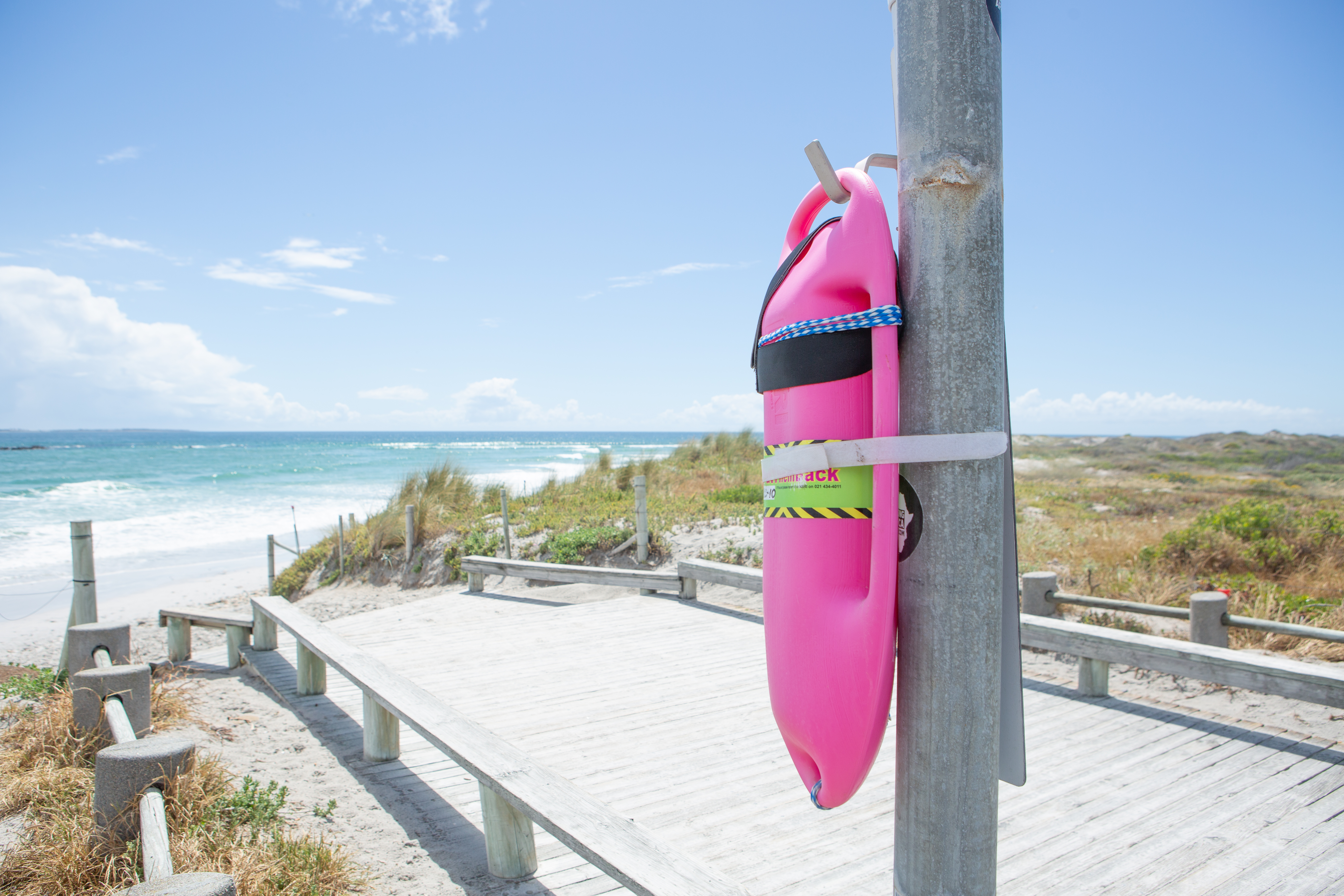On 7 December, the communications officer at the National Sea Rescue Institute, Craig Lambinon, said the NSRI had played a supporting role in recovering a body believed to be that of a teenager from Soweto at East Beach, Port Alfred.
“While formal identification by family is in progress, the body located and recovered is believed to be the missing teenager, age 16,” said Lambinon. The cause of death is a suspected drowning.
According to Dhaya Sewduth, president of Lifesaving South Africa (LSA), about 1,400 to 1,500 lives are lost every year to drownings in the country. This startling yet familiar statistic is part of what inspired Andrew Ingram, communications manager at the NSRI, to develop the iconic Pink Rescue Buoy initiative.
In 2016, a 41-year-old father drowned in Glentana, near Mossel Bay, as he was trying to save his 10-year-old daughter caught in a rip current.
This is when Ingram began to look “into ways of providing bystander rescue equipment that would help trained rescuers, untrained good Samaritans and casualties survive drowning events”.
It is not all doom and gloom
With “more than 2,000” pink buoys deployed in various inland water bodies in South Africa as well as along its coastline, the NSRI is proudly aware of “203 people who have been rescued with a pink buoy”, said Ingram.
Sewduth believes the biggest strength of LSA is its preventative approach.
“If you look at last weekend, I was on a beach on both days where literally thousands and thousands of people were on the beachfront. And all those families on those two days went home intact.
Read more: Cape beaches and the status of seawater quality – the good, the bad, the ugly, the fresh and the foul
“The biggest problem which leads to bathers getting into trouble is swimming outside the designated bathing area and then not listening to lifeguards to stay in the safe zone. We can go on about our 130,000-plus rescues all day, but a good lifeguard is a lifeguard who did not have to jump into the water five times to save five people.
“A good lifeguard keeps people from danger from the start,” said Sewduth.
How to stay safe this season
Both Sewduth and Ingram urge people to be aware that the ocean is dynamic and changes because of wind, weather and other factors. It is important to make sure that children are supervised in your line of sight, and ideally at arm’s length.
It is also important for swimmers to ensure that they follow the guidelines of lifeguards on duty and avoid swimming in an area that is not patrolled.
Emergency contacts
National Sea Rescue Institute: 087 094 9774
Lifesaving South Africa: 031 312 9251
South African Police Service: 10111. DM
This story first appeared in our weekly Daily Maverick 168 newspaper, which is available countrywide for R35.





